SlimDuct Line Set Covers – Hide Unsightly Utility Cables
SlimDuct Covers Perfect for Renovation Work
The more time you spend in construction the more products I come across that would have been nice to have years sooner. While this isn’t a new product it is one that many people are no familiar with yet it’s extremely handy for lots of applications. SlimDuct is one of those products that make a remodelers life MUCH easier especially for trades like HVAC and Electrical.
I recently had a mini-split A/C unit installed in my workshop and the outdoor condenser is located just outside the garage as seen in the picture above. The installation looks great even though it was done as a renovation years after the house was built. Part of that neat orderly appearance is because the line set was installed inside of SlimDuct which is the white “pipe” located to the left of the unit. If you look at the picture below you’ll see what this looked like without the SlimDuct.
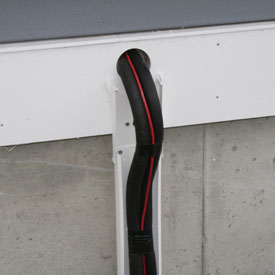 As you can see the difference is impressive and it also adds another layer of protection against the elements for vital electrical and mechanical products. The great thing about SlimDuct is the fact that you can use it for all kinds of renovation applications where you can’t fish something into the wall and it needs to run some distance either vertically or horizontally on the outside of the house.
As you can see the difference is impressive and it also adds another layer of protection against the elements for vital electrical and mechanical products. The great thing about SlimDuct is the fact that you can use it for all kinds of renovation applications where you can’t fish something into the wall and it needs to run some distance either vertically or horizontally on the outside of the house.
Easy Installation
SlimDuct is super easy to install. It consists of a two piece main section, a back and a cover. The back gets attached to the building with screws and/or concrete anchors. The wires, pipes, etc are placed over the cover, then the top snaps into place attaching to the bottom plate.
There are numerous starting pieces, ending pieces, splices, elbows, ells, and terminations. All of the pieces make it very easy to come up with a neat, disguised cover for almost any utility line. In the adjacent photo I attached the top starting piece to the wall, then a length of the back cover.
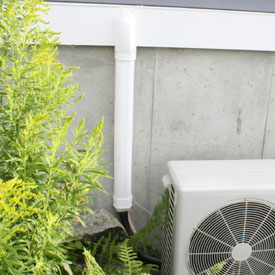 As you can see above the front cover piece snaps into the flanges of the back cover. Next I installed a top cover to keep the weather out and a bottom cover to keep out as many pests as possible.
As you can see above the front cover piece snaps into the flanges of the back cover. Next I installed a top cover to keep the weather out and a bottom cover to keep out as many pests as possible.
Installation only requires simple tools for cutting, drilling, and screwing the materials together. Another great advantage is SlimDuct can be used on wood, masonry, steel and even vinyl siding. The possibilities are endless with this stuff. It can be used to hide water lines, electric lines, cable TV lines, even water lines in some situations.
So if you’re doing any type of renovation work be sure to look at SlimDuct as a way to make your work look professional yet planned!.




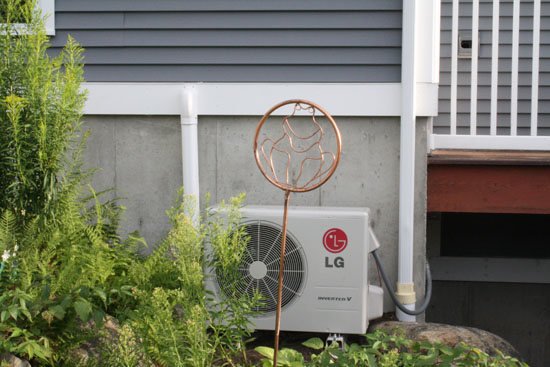
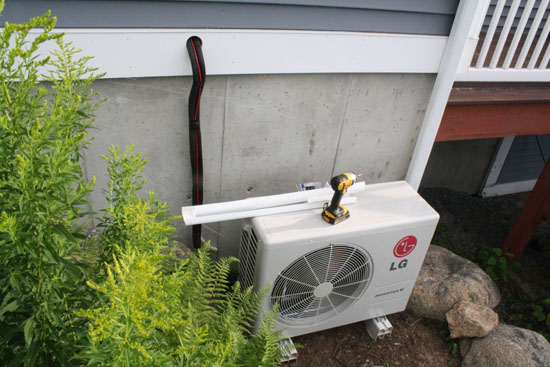
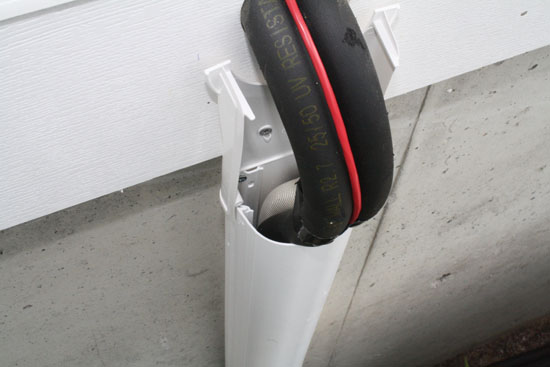









Leave a comment